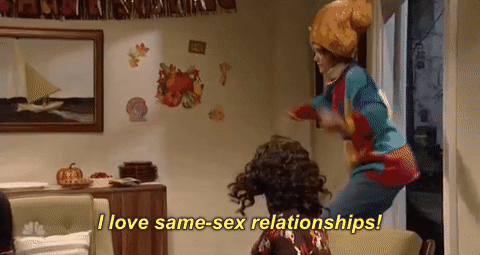"The whole ‘wishing it true’ thing is irritating. - I wouldn't have a problem if it were true or not, but the forced interpretation from some of these people is intensely insulting to gay folks. Gay relationships aren't "cute", they're normal.” - BarbradyBeatsYale’s comment on a South Park Wikia page for the episode ‘Tweek x Craig’
South Park is a satirical comedy program currently airing on Comedy Central aimed at adults. Episodes are filled with crude, grossed-out humor, but with an underlining theme and message concerning topical American trends or issues. In the sixth episode of season nineteen, “Tweek x Craig”, the Asian girls of the school, draw art of the characters Tweek and Craig, depicting them in sexual and romantic situations, creating a false rumor that the boys are in a relationship.
The episode is a fun poke at slash fandoms, parodying yaoi, a Japanese category of comic books that detail men being in love. If you’re unfamiliar with the geekdom world, you may be confused. Allow me to explain further.
The slash fandom is a community made up of fans for a particular work of fiction who pair two characters romantically, whether or not they are actually together. The “slash” comes from the forward slash that separates the names involved in a pair. An example would be Kirk/Spock. If you did not catch the hint, this is the pairing for Captain Kirk and Spock from Star Trek. To be clear, they don’t have to be gay, but these tend to be the most popular of pairings. Women who are active in these fandoms, for one reason or another, simply love watching, reading, drawing and writing about gay relationships between men.
The content created out of the lust of these gay pairings can end up with some pretty raunchy results. You can find, and I quote, “Jacob Sartorius dirty gay fan fiction [sic]” in the top 5 results with the search “gay fan fiction” into Google.
Sartorius is a 15-year-old internet personality whose fans are roughly around his age or younger. I don’t know why the world needs dirty, gay, Jacob Sartorius fan fiction, but this goes to show this type of content is made by anyone, and open enough for anyone on the internet to stumble upon (especially if you’re looking for it).
A large portion of the content created around these fictional, gay relationships are not made by gay males. They are made by females, and though they can claim it is not for any gender in particular, they are made with the mind of a female. Women in the LGBTQ+ community have shed light on how lesbian pornography is made with the male audience in mind. When male directors create lesbian pornography for men, they create a fantasy about how women have sex and create a stigma of gay or queer women being overly sexual and predatory beings. The same problem arises with women creating content around gay relationships between males. The truth is that women don’t know what a relationship between gay males is like, and that’s when they become a prop in women's fantasies.
A common theme strung through many stories will have all queer people rolling their eyes to the back of their heads. “Which one is the man/woman?” The forcing of heteronormative roles go as extreme as Mpreg, a type of gay fan fiction where one of the males, typically the more feminine, becomes pregnant…somehow. Other stereotypes you might come across in these works of fiction include the hilarious, flamboyant gay BFF and the discussion of who is a top or a bottom. Some may argue these stereotypes may not be untrue, but the problem is that they are being depicted by young female minds who don’t know much about the LGBT+ community.
Other critics of gay fan fiction have pointed to the fact the characters involved in slash fiction are all attractive, slim and fit.
“The slash community isn’t interested in ‘love between men’. It’s interested in a specific type of gay man that it deems attractive,” comments Cecil in the comment section of an article regarding the same issue. Others bring up that gay fan fiction ignores real issues that gay men go through, which could feed into widespread ignorance.
It would be wrong to paint all women authors of gay slash fiction as blind or intentionally unaware. As a matter of fact, some have suggested that writing about heterosexual relationships acts as an exploration of their own sexuality. Among a portion of straight women, there are many queer women and men who also express their creativity using their favorite characters. I reached out to a queer, female author on the website Tumblr, who asked to remain anonymous, on their opinion.
“I know there are girls out there who use fanfic [sic] as their escape, even if it might be a fantasy… I think a lot of those ignorant stories posted online are from young, amateur writers who become interested when they read well written fanfic from more experienced writers…”
Fan fiction is supposed to be fun. It is an expression of creativity and an escape from reality by many who partake in it. Similar to the programs we view, the pornography we might watch, the fan fiction we read doesn’t assume our character. While fantasizing and romanticizing doesn’t make anyone an ally of the gay community, it also doesn’t vilify. It is when those fantasies transcribe into reality, when straight girls wish for a “gay bff” or when they try to hook up their only two gay friends and “ship” them. That being said, if you truly wish to be an ally for the gay community, read up on social issues and support LGBT+ organizations. Just remember to keep it in the bedroom, ladies.




















